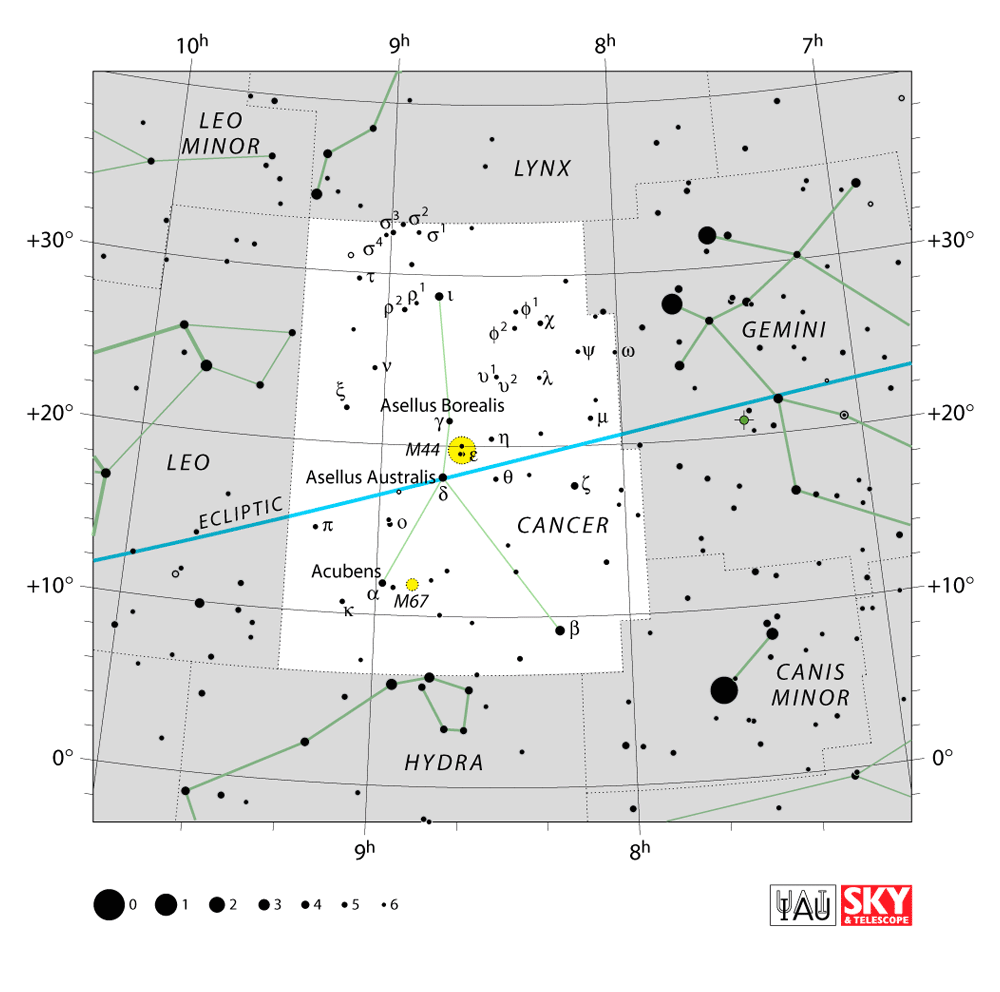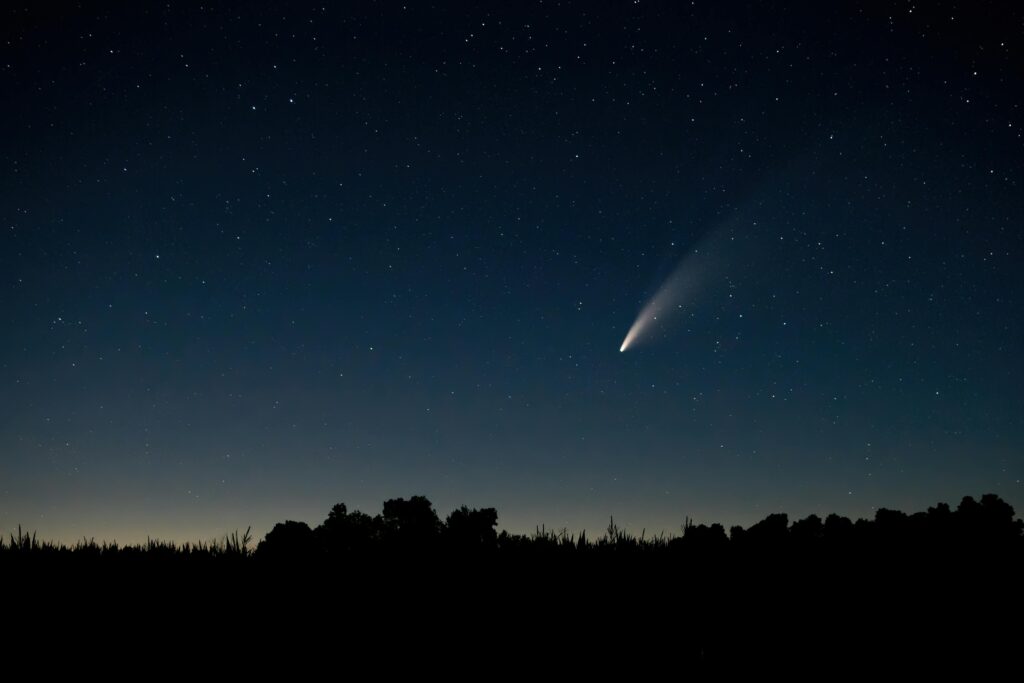Stargazing with Cancer
© freepik/tartila
Table of Contents
The Cancer constellation, among the 88 officially recognized in the night sky, holds a significant place in both ancient mythology and astronomy. Its name, originating from the Latin word for crab, is linked to a prominent character in Greek mythology – the colossal crab that engaged in a fierce battle with Hercules as part of his Twelve Labors. Despite being a relatively faint constellation, Cancer features a notable star cluster known as the Beehive Cluster (M44), though it is not visible to the naked eye in urban areas. Situated in the Northern celestial hemisphere, Cancer also played a pivotal role in shaping the zodiac, marking the position of the summer solstice in ancient civilizations.
The constellation encompasses an area of 506 square degrees, making it a medium-sized constellation. Its stellar constituents tend to be relatively faint, with the brightest, Beta Cancri, boasting an apparent magnitude of 3.5. Notably, within Cancer lie two stars known to host planets. One of these, 55 Cancri, is particularly intriguing, as it harbors a system of five planets, including a Super-Earth and four gas giants. Notably, one of these planets resides in the habitable zone, with anticipated temperatures akin to those of Earth. Cancer is flanked by neighboring constellations: Gemini to the west, Lynx to the north, Leo Minor to the northeast, Leo to the east, Hydra to the south, and Canis Minor to the southwest.
HISTORY OF CANCER

The Cancer constellation has a rich history deeply intertwined with ancient civilizations and their interpretations of the night sky. Its origins date back thousands of years when early astronomers observed patterns in the stars and integrated them into their cultural narratives.
In Greek mythology, Cancer is associated with the second of Hercules’ Twelve Labors. While Hercules was fighting the multi-headed Hydra, Hera, the queen of the gods, sent a giant crab to distract him. Hercules easily dispatched the crab, but as a tribute to its valiant effort, Hera placed it in the heavens as the constellation Cancer.
The Cancer constellation also played a significant role in the development of the zodiac, an astronomical framework used for tracking celestial movements. In ancient Babylonian astronomy, Cancer marked the location of the summer solstice, signifying the longest day of the year. This position granted Cancer special importance in early agricultural calendars and rituals.
In ancient Egyptian culture, Cancer was linked to the scarab beetle, a symbol of transformation and rebirth. The scarab was revered for its association with the life-giving properties of the Nile River and its cycles of flooding and receding.
ASTRONOMICAL FEATURES

The Cancer constellation, though not particularly bright or prominent, hosts several intriguing astronomical features. Here are some of the notable celestial objects within or near the Cancer constellation:
BEEHIVE CLUSTER
The Beehive Cluster, also known as M44 or Praesepe, is a captivating open star cluster situated in the constellation Cancer. Visible to the naked eye, it is one of the closest star clusters to Earth, lying approximately 577 light-years away. This cluster derives its name from its characteristic appearance, resembling a swarm of bees. Comprising hundreds of stars, the Beehive Cluster is a popular target for amateur astronomers. Its proximity and easily discernible features make it a favoured subject for both visual observation and astrophotography, adding to its allure in the night sky.
DELTA CANCRI AND GAMMA CANCRI
Delta Cancri, also known as Asellus Australis, and Gamma Cancri, known as Asellus Borealis, are two binary star systems located within the Cancer constellation. Asellus Australis is the southern member of the pair, while Asellus Borealis is the northern one. They are both relatively bright stars and are part of the Cancer constellation’s “claws.” Delta Cancri is composed of two stars in close orbit around each other, while Gamma Cancri consists of two stars separated by a larger distance. These stars add to the celestial tapestry of the Cancer constellation, contributing to its distinctive appearance in the night sky.
ALPHA CANCRI
Acubens, designated as Alpha Cancri, is a binary star system located in the Cancer constellation. It is a notable member of the constellation’s “claws.” Acubens consists of two stars in close orbit around each other. The primary star is a white main-sequence star, similar in type to our Sun. The secondary star is a white dwarf, a dense stellar remnant in the later stages of its evolution. This intriguing binary system adds to the celestial diversity of the Cancer constellation, offering a fascinating target for astronomers and stargazers alike.
COPERNICUS
55 Cancri, also known as Copernicus, is a star system located in the Cancer constellation. It is of particular interest to astronomers due to its multiple exoplanets. At least five planets have been detected orbiting 55 Cancri, with one of them lying within the star’s habitable zone, making it a focal point in the search for potentially habitable worlds. This star system, approximately 41 light-years away from Earth, continues to be a subject of extensive study in the field of exoplanetary research, providing valuable insights into the diversity of planetary systems beyond our own.
NGC 2775
NGC 2775 is a striking spiral galaxy situated near the border of the Cancer and Hydra constellations. Although it may appear modest in brightness, this galaxy holds a captivating allure for astronomers and stargazers alike. Its intricate spiral arms and central bulge contribute to its distinct appearance. NGC 2775 offers a rewarding target for amateur astronomers equipped with telescopes, allowing them to explore the beauty and complexity of distant galaxies within our cosmic neighbourhood.
NGC 2500
NGC 2500 is a spiral galaxy located in the Cancer constellation. While it may not be as prominent as some other celestial objects, it still holds a notable place in the night sky. With its swirling arms and central nucleus, NGC 2500 exhibits the characteristic features of a spiral galaxy. Although it may require a telescope to observe in detail, it offers amateur astronomers an intriguing opportunity to explore the diverse array of galaxies that populate our universe.
VISIBILITY AND SEASONALITY

The visibility and seasonality of the Cancer constellation offer a fascinating interplay between Earth’s orbit and the celestial sphere. Depending on one’s location and the time of year, Cancer reveals itself with varying degrees of prominence. Understanding when and where to observe this constellation enriches the stargazing experience, providing insights into the cyclical rhythms of the cosmos.
NORTHERN HEMISPHERE
- Winter: Cancer is most prominent during the winter months, starting in November. It rises in the east and is well-placed for observation in the evening sky.
- Spring: As spring progresses, Cancer moves towards the western horizon. By late spring, it becomes less visible and eventually sets in the west.
- Summer: Cancer is not typically visible in the summer months for Northern Hemisphere observers, as it is below the horizon during nighttime.
- Autumn: Cancer begins to rise in the east again, becoming more visible in the late evening. It continues to be well-placed for observation throughout the fall.
SOUTHERN HEMISPHERE
- Summer: Cancer is not visible during the summer months for Southern Hemisphere observers, as it is below the horizon during nighttime.
- Autumn: Cancer begins to rise in the east again, becoming more visible in the late evening. It continues to be well-placed for observation throughout the fall.
- Winter: Cancer is most prominent during the winter months, starting in November. It rises in the east and is well-placed for observation in the evening sky.
- Spring: As spring progresses, Cancer moves towards the western horizon. By late spring, it becomes less visible and eventually sets in the west.
METEOR SHOWER

The Delta Cancrids meteor shower is a modest annual celestial event associated with the Cancer constellation. It occurs between December 14th and February 14th, with its peak typically falling around January 17th. This meteor shower is caused by the Earth passing through a stream of debris left behind by an unknown comet or asteroid in its orbit around the Sun.
Compared to some of the more renowned meteor showers like the Perseids or Geminids, the Delta Cancrids are considered relatively minor. On average, they produce about 4 to 5 meteors per hour at their peak. These meteors are characterized by their modest brightness and speed. While they may not create the same dazzling display as some of their more prolific counterparts, they still offer a captivating celestial spectacle for observant stargazers.
To witness the Delta Cancrids, it’s advisable to choose a location away from the disruptive glow of city lights. Finding a spot with a clear, unobstructed view of the night sky enhances the experience. The optimal time for observation is typically after midnight, when the Cancer constellation, the radiant point of the meteor shower, is higher in the sky.
While the Delta Cancrids may not be the most famous meteor shower, they provide a unique opportunity for astronomy enthusiasts to engage with the cosmos. Observing these meteors offers a connection to the ongoing celestial processes that shape our understanding of the universe. It serves as a reminder that even less prominent meteor showers have their own beauty and intrigue, contributing to the rich tapestry of astronomical phenomena that unfold above us.
